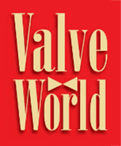Valve pressure, a critical parameter in fluid control systems, determines how effectively valves manage flow. The term “valve pressure” refers to the pressure rating a valve can handle safely. Selecting valves with the appropriate valve pressure rating is paramount to ensure system integrity. Valves must withstand the pressures exerted on them within specific applications. Failing to consider valve pressure can lead to leaks, ruptures, or system failures. Thus, comprehending and matching valve pressure requirements is essential to maintain safety and efficiency in fluid control systems.

